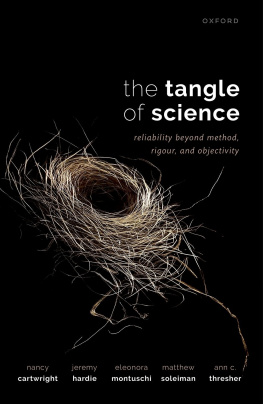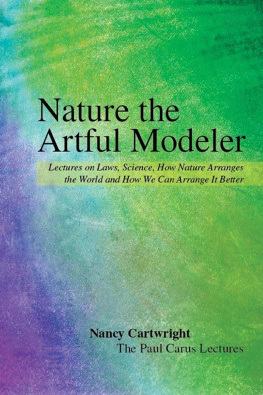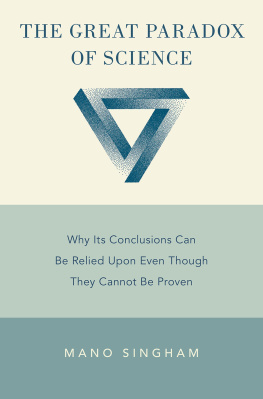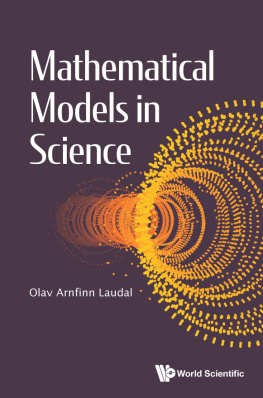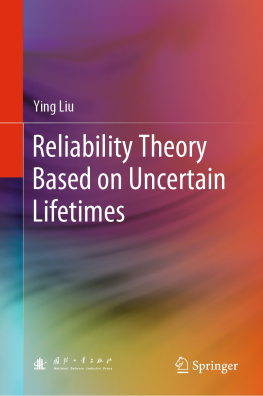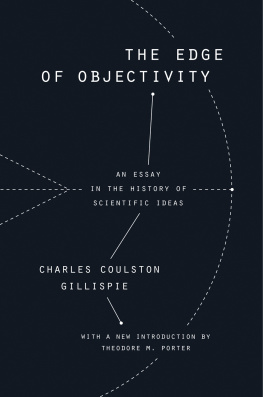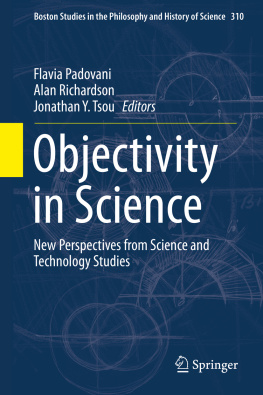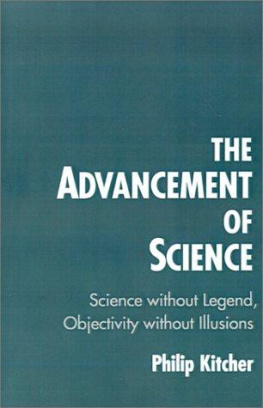This book is the result of a research programme that the authors have developed together and in dialogue with a number of colleagues who have greatly contributed to the advancement of the contemporary field of philosophy of science.
A huge debt goes to Hasok Chang. His work on temperature is one of two key sources we draw on for our illustration of the tangle in . More importantly, The Tangle of Science is a study in tune with the movement for the philosophy of science-in-practice. Chang has led the movement for this kind of philosophy. You will also see echoes of his monumental work on pragmatic theory of truth.
Many ideas for this book have evolved in conversation with Sharon Crasnow and with Alison Wylie and in parallel with their own work. What we offer here is a general framework that we believe dovetails with their specific proposals. We are very grateful for all their help and for their contributions.
We also owe a big debt to Peter Vickers who read the whole manuscript and offered much helpful advice (some of which we took!) and to Nicola Craigs and Giulia Gandolfi who provided invaluable help with the production of the manuscript. We are also grateful to Adrian Williams who advised on Meccano, Sindhuja Bhakthavatsalam who taught Nancy Cartwright how important it is to relate endeavours to purposes (see, for instance, ), Cathy Gere for her comments on parts of the book, Craig Callender for his advice on gravitational waves, and Anna Alexandrova for inspiration. Lucy Charlton provided many of the illustrations.
Section ).
A version of Sections can be found in Eleonora Montuschis Finding a context for objectivity, Synthese 199 (2021).
Much of Cartwrights and Montuschis research for this book was supported by Knowledge for Use (K4U). The K4U project received funding from the European Research Council (ERC) under the European Unions Horizon 2020 research and innovation programme (grant agreement No 667526 K4U). The content reflects only the authors view. The ERC is not responsible for any use that may be made of the information it contains. Cartwright, Soleiman, and Thresher all received support from the summer research fund at the University of California at San Diego. Soleiman also received support from UC San Diegos Science Studies Program.
In Brief. Science creates multitudes of products that do what you expect of them: theories, models, concepts, experiments, measurement procedures, technological devices, social policy evaluations, social and archaeological narratives, approximation techniques and many, many more. What underwrites their reliability? We group the standard answers under the headings scientific method, rigour, and objectivity. Though they have a role to play, these usual suspects, we argue, are not up to the job of supporting the effectiveness of these products, whether individually or in combination. What, then, can provide such support? It is not just these usual suspects or anything like them. Rather, the reliability of any one product in science generally rests on a vast, amorphous network of other heterogeneous scientific products, usually unnoted and undersung, that woven together, as in a Jacana birds nest, help provide the secure support it needs. This is the tangle of science referred to in our title.
In more detail. We put people on the moon and robots on Mars, we teach our children that the earth is not flat but roughly spherical and that water conducts electricity, we happily submit to laser cataract surgery, and we invest heavily in studying the genetic structure of viruses. Rightly soyou can fly round the earth to see its shape for yourself, people get killed by using hairdryers in the bath, laser cataract surgery goes wrong only once in around 5,000 times, and gene-based research has helped to develop vaccines that prevent deadly illnesses. Clearly much of what science offers can do what you expect of it. But what is it about science that makes its products reliable?
Bodies like the US National Academy of Sciences, the UKs Science Council, and the American Physical Society tell you that the good thing about science is that it is systematic, it is testable, and it uses empirical evidence. This puts a lot of pressure on these wordsjust how are they to be understood?
How systematic is systematic, and systematic in what sense? Is physics more scientific than anatomy or geology because it can be systematised via sets of equations? And what, after all, should count as evidence for or against something, and is evidence enough or must it be of the right kind and variety? Do we need science to make novel predictionsto predict facts we didnt already knowor is it ok if it just accommodates some of what is well-known? And does it matter how precise the predictions are?
There is a vast amount of both philosophical and scientific work on these questions. The traditionally cited reasons for the reliability of science are the meat of Part I of this book. We organise these under three headings: science uses the scientific method, it is rigorous, and it is objective. Part I rehearses the strengths and the limitations of each, arguing that these three pillars cannot generally deliver the degree of reliability that we all depend on in using the products of science, nor can they secure scientific knowledge. We argue:

